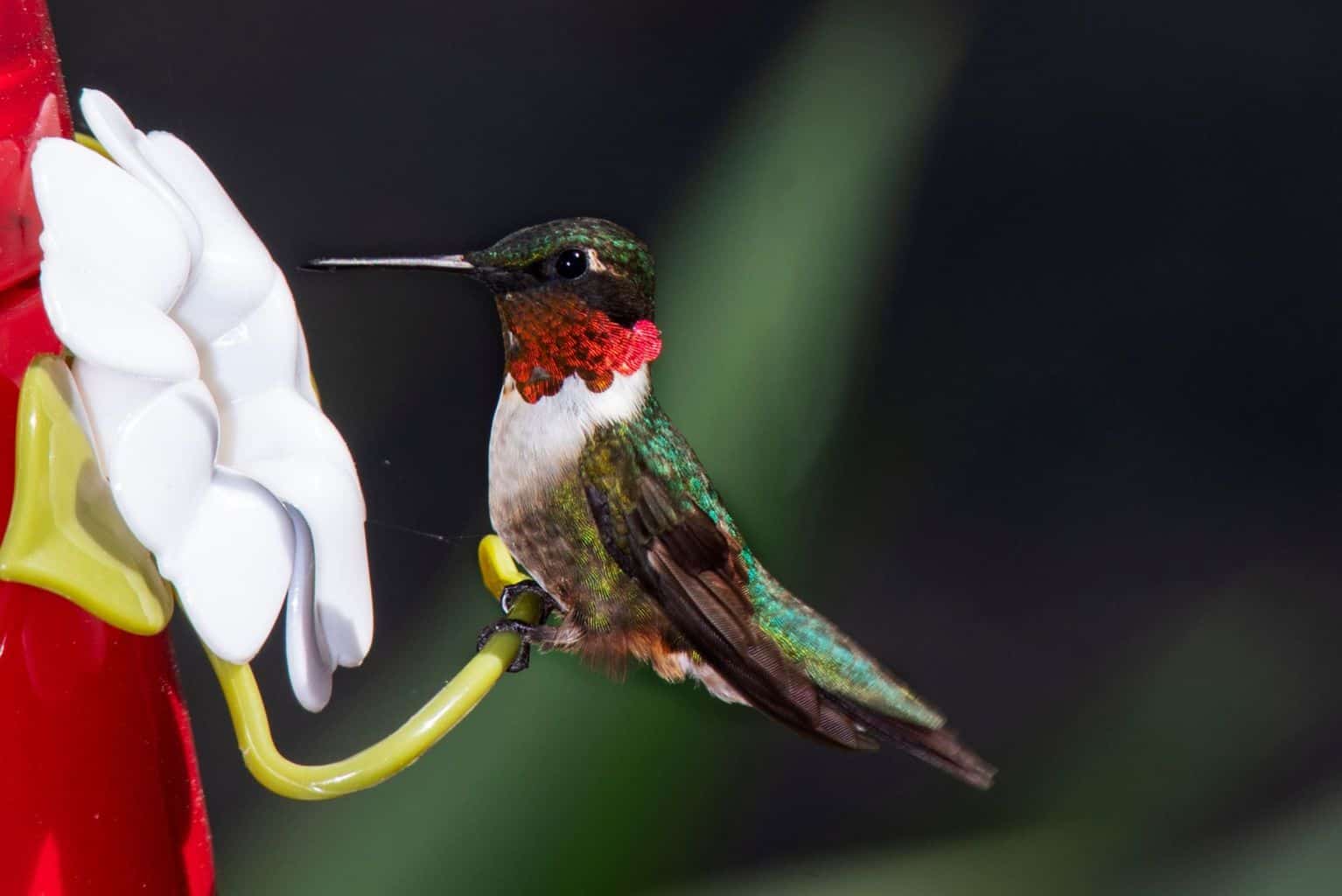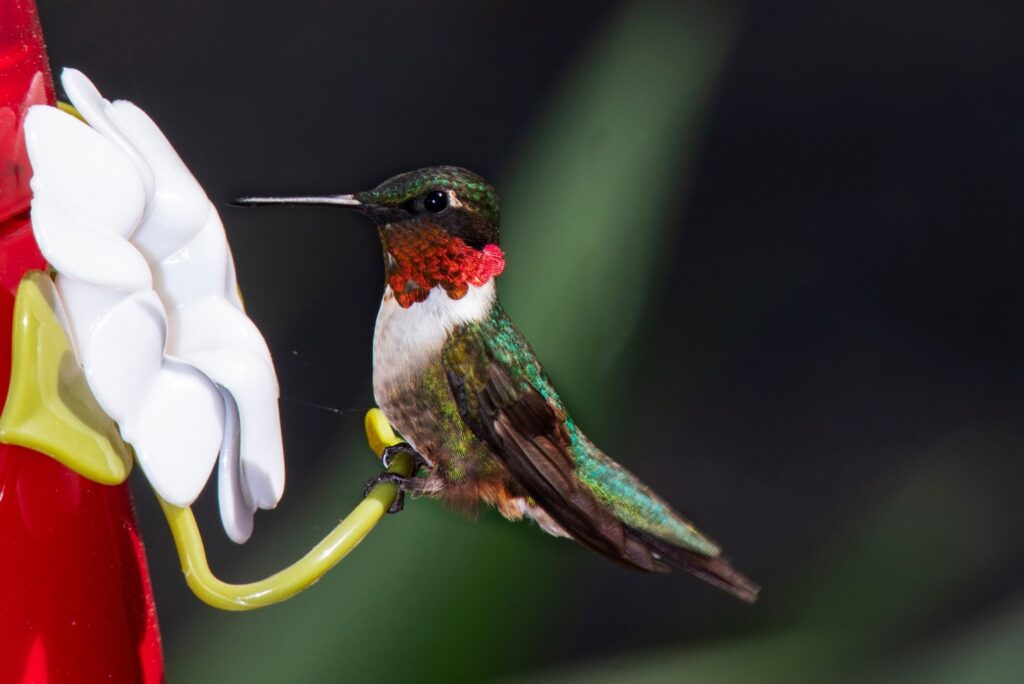In the early spring, people across much of the US start looking forward to the arrival of hummingbirds!
These delightful little birds bring so much joy to so many people. They are often brightly colored, and as one of the smallest birds on the planet, it can feel like a special treat to see one in person.
Unfortunately, many North Dakotans do not have good access to hummingbirds because they only consistently visit the eastern part of the state.
When can people in North Dakota see hummingbirds? And when do hummingbirds leave North Dakota for the winter?
Hummingbirds typically start to arrive in North Dakota in mid-April, and they continue to move into the area through the month of June. When it’s time to migrate to warmer climates, the males will leave first, usually by mid-August. All of North Dakota’s hummingbirds have typically departed by the end of October.
Knowing when hummingbirds migrate to eastern North Dakota can give you a much better chance of spotting these delightful birds. If you keep a few tips in mind, you can also attract hummingbirds to your yard and garden!

Predicting the Arrival of Hummingbirds in North Dakota
It would be great to know the exact day or week that hummingbirds arrive in North Dakota. But hummingbirds are living animals who have to adapt to their surroundings and circumstances, and that can affect their migratory patterns.
Weather conditions may change their departure date; they are unlikely to migrate during a tropical storm or when conditions have not warmed up enough for them yet. They are also affected by anything that affects the insects and nectar that make up their diet.
Interestingly, some hummingbirds just behave differently from the ones around them, and they will prefer to migrate a little earlier or later than the rest!
Because of these subtle changes, the arrival of hummingbirds takes place over a few weeks or even a few months.
In North Dakota, you can expect to see hummingbirds begin to arrive in the eastern part of the state in mid-April. They will continue to come throughout the month of June.
After arriving in an area, they will find mates and build nests to lay eggs and hatch babies. Once the babies have grown into juveniles, they will leave for the winter.
Who Arrives First: Male or Female Hummingbirds?
Migration habits are also affected by a hummingbird’s sex. You will probably see male hummingbirds before you see females, and the males will also depart before the females.
By departing at different times, hummingbirds don’t have to compete for insects and nectar during their long migration.
What Kind of Hummingbirds Can Be Found in North Dakota?
Although fifteen species of hummingbirds live in or visit the US, only a handful of varieties can be spotted in North Dakota.
If you spot a hummingbird in North Dakota, the chances are good that it is a Ruby-throated hummingbird. This is the only kind of hummingbird that predictably visits the state.
Males are recognized by their ruby-red throat that stands out from their greyish-white chest. Their flanks and crowns are shimmering green, and they have a forked tail that looks slightly violet in hue.
Females are plainer in their appearance, but they are no less of a treat to see! They have white throats that are lightly speckled, and their greenish backs and sides are less flashy than the males. They also have a notched tail, which is different from the male’s forked tail.
Calliope, Broad-tailed, Rufous, and Costa’s hummingbirds may be spotted in North Dakota, but only on very rare occasions, as they do not nest in the state.
How to Attract Hummingbirds to North Dakota’s Yards & Gardens
Spotting an individual hummingbird is a joyous event for birders across North Dakota.
If you want to see more of them, you should make your yard, garden, and landscaping as appealing as possible to nesting hummingbirds. This way, you do not just depend on good luck to see a hummingbird. You can see hummingbirds for the whole season if you put in the effort to create an attractive hummingbird garden!
What Plants Should You Grow?
To start, plant what attracts hummingbirds. They are pollinators, which means they are drawn to pollinator-friendly plants. Colorful plants with tubular blooms hold a lot of nectar, making them an especially attractive meal for hummingbirds.
Some tubular-shaped flowers that can be grown in North Dakota include columbines, daylilies, foxgloves, hollyhocks, lupines, cleomes, impatiens, petunias, and bee balms.
Native species should always be prioritized over invasive ones, and don’t forget to consider the wildlife in your area. You don’t want to plant anything that would endanger area wildlife or pets.
Why Do You Want to Attract Insects?
Nectar-producing plants attract insects. That may sound like something you would want to avoid, but if your goal is to increase hummingbird sightings, then it is something you definitely want to do!
Hummingbirds eat small bugs, including their larvae and eggs. Insects provide them with the fat, protein, and salts that nectar doesn’t offer. Hatchlings are especially dependent on insects to grow into healthy juveniles and adults.
Adult hummingbirds eat several dozen insects every single day. They eat even more when they are preparing for a migration (or recovering from one)!
To create an insect-friendly garden, avoid using chemical fertilizers, pesticides, and weed-killers, as these chemicals can kill the insects that feed the hummingbirds you want to attract.
Should You Put Out a Hummingbird Feeder?
When you’re trying to attract hummingbirds, the best strategy is to fill your garden with native, nectar-producing, insect-attracting flowers and plants.
However, you may want to put out a hummingbird feeder to supplement these all-natural options in certain circumstances.
For example, when hummingbirds have finished their long migration, they often need extra nutrition to recover from the journey. Before migrating again in the fall, they also need to store up calories to prepare. This means that having a clean, full hummingbird feeder from the beginning to the end of hummingbird season does more than just let you see hummingbirds. It also helps the species thrive!
When Should North Dakotans Hang Hummingbird Feeders?
Hang your feeder outside by mid-May at the latest. Don’t forget to support hummingbirds by providing other items, like water features and potted plants.
When Will North Dakota’s Hummingbirds Leave the State?
Hummingbirds will begin to depart North Dakota around the middle of August. Males leave first, creating less competition for food along the way. Females and juveniles spend a couple more weeks eating and preparing for the journey and then leave by September or October.
When Should Your Hummingbird Feeder Come Down?
Because of how individual hummingbirds migrate, some hummingbirds may stick around until late October or, rarely, early November. If a straggler hasn’t left by October, a feeder may help them prepare, especially after many of the nectar-producing plants have died.
People in North Dakota should bring their hummingbird feeders down in early November. If you see a hummingbird late in the season, you should keep your hummingbird feeder up for at least two more weeks.

